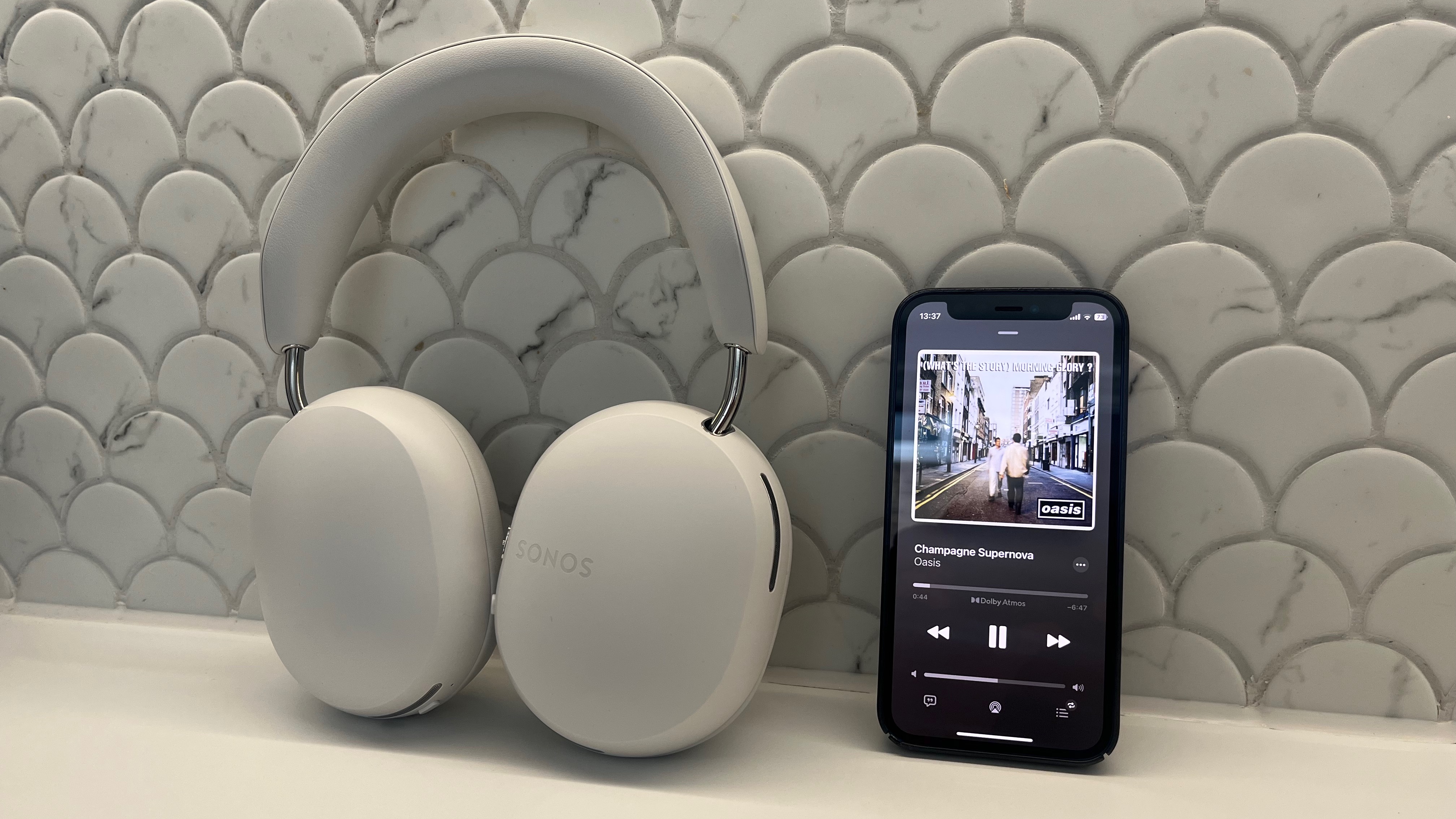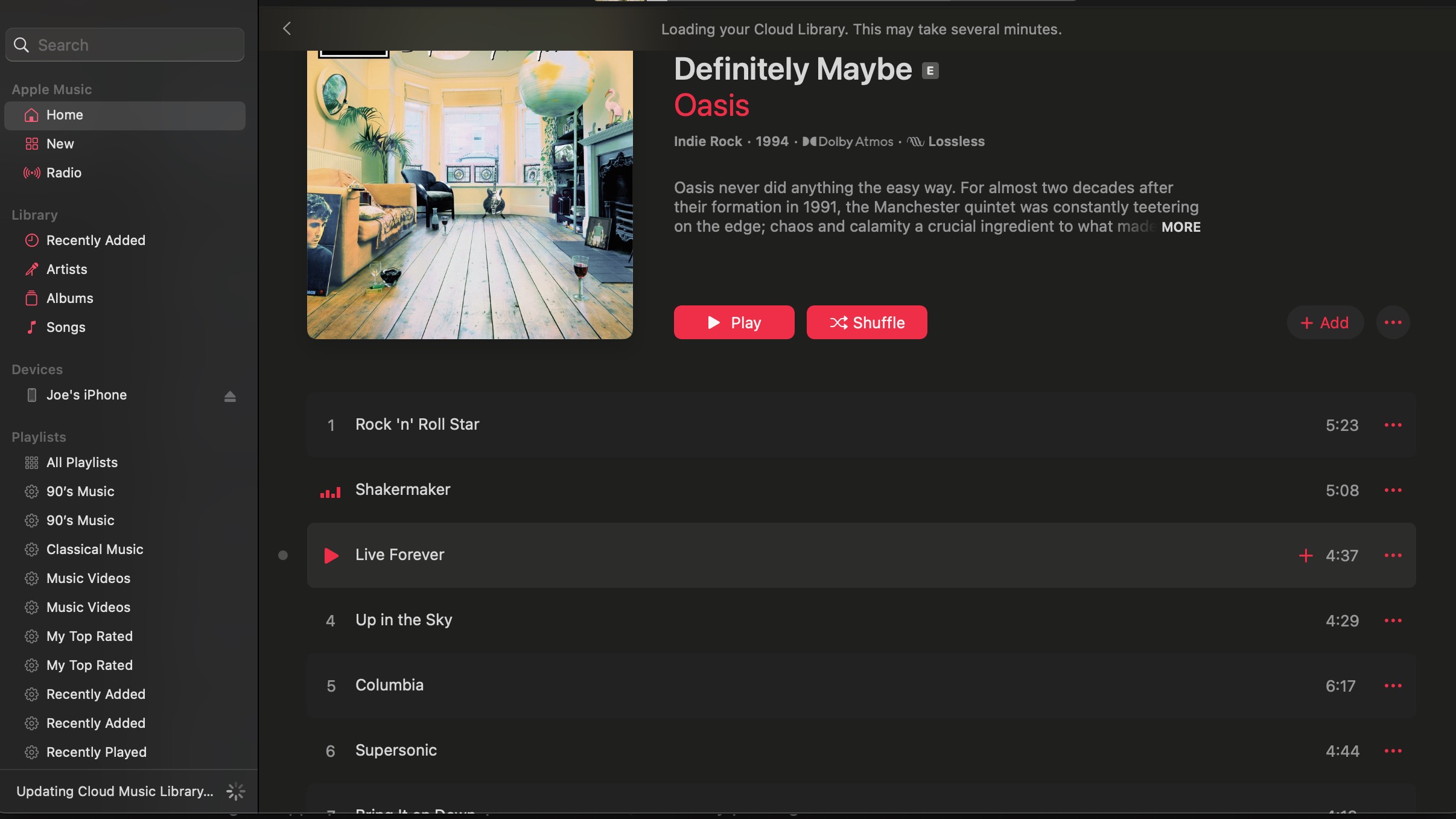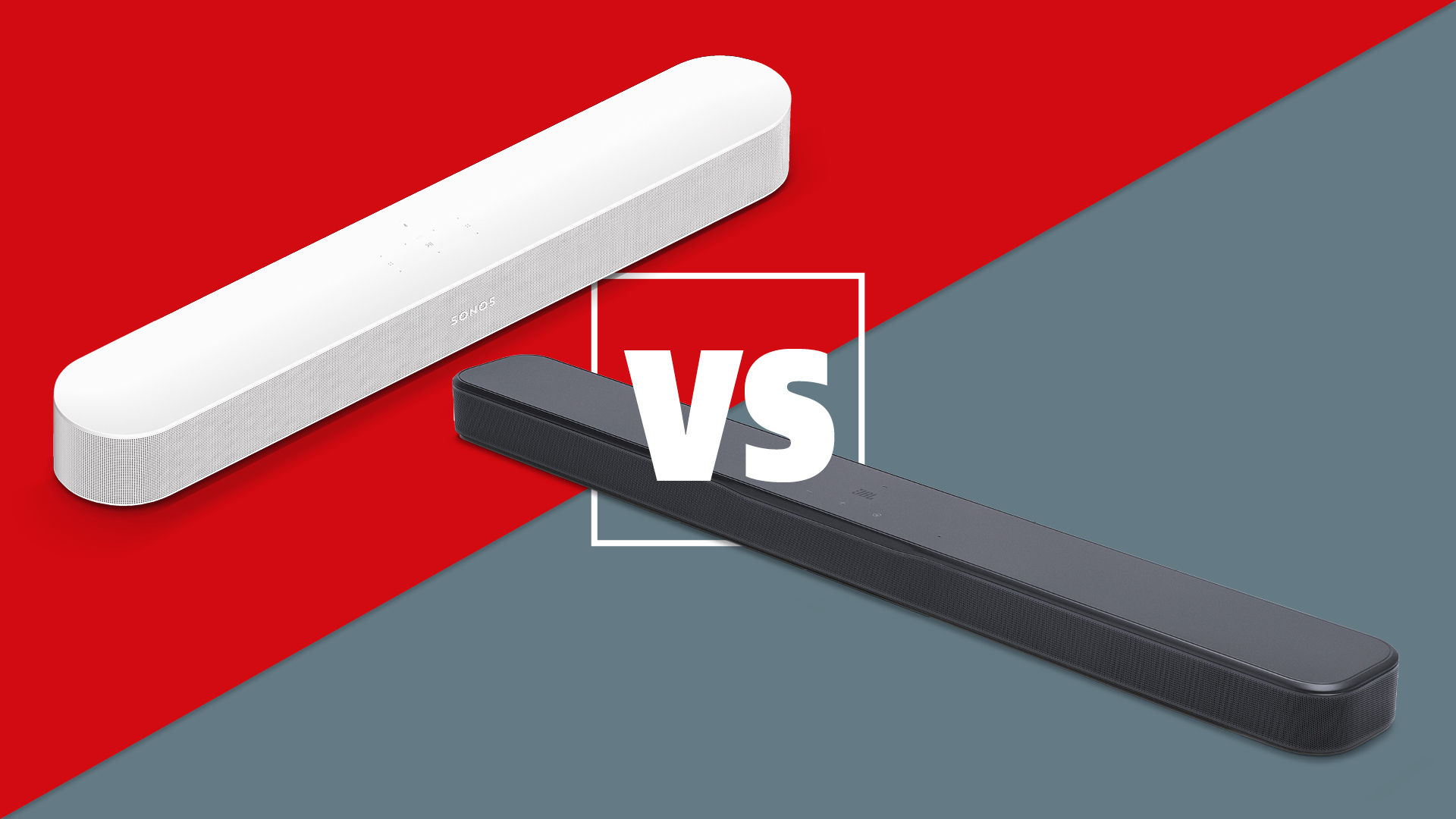I spent the day listening to Oasis in Spatial Audio, and heard the tech at its best and worst
I definitely maybe went mad for it

Oasis' long-awaited reunion tour begins tonight in Cardiff. But if you couldn't get a ticket – that's 99 per cent of us – here's the next best thing: their entire back catalogue in Spatial Audio on Apple Music.
I recently spent a day working through their albums using a pair of Sonos Ace wireless headphones. Would I recommend you do the same? Yes, with a but.
Getting set up
Believe it or not, this was actually my first experience of Spatial Audio on Apple Music. It's not just that I didn't have the right equipment, my more discerning nature also played a part.
Yes, technically the speakers on my iPhone 12 mini do have Dolby Atmos (which is required for Spatial Audio). But come on. Are you really going to get a more immersive audio experience by farting the sound through those little pinholes on the bottom edge of the phone?
Fortunately, I currently have in my possession a pair of Sonos Ace wireless headphones. While they may have only scored three stars in our review, their spatial audio performance punches above their weight.
So it was time to get set up. As well as pairing the headphones to your mobile, you have to enable Dolby Atmos through both the Apple Music and Sonos apps, which seems one step too many to me.
You'll know that you're getting the full Spatial Audio sound when you see 'Dolby Atmos' written alongside the Dolby logo on the 'now playing' screen. Which must be confusing for those not in the know.
The latest hi-fi, home cinema and tech news, reviews, buying advice and deals, direct to your inbox.
'Spatial Audio' is basically the branding that Apple has put on Dolby Atmos through Apple Music (everyone else uses 'spatial audio' without feeling the need for capitalisation, or just calls it Dolby Atmos).
That's set-up complete. Now how does it sound?
The experience

I begin with Wonderwall – because if you're listening to Oasis, you may as well go right in at the deep end.
To begin with, it's a little underwhelming. The simple acoustic guitar sounds unremarkable, and Liam's vocals as direct as ever. But it's once the other elements join the production that the sound becomes more immersive.
By the overlapping "saves meeeeee"s towards the track's close, you're left in no doubt that this is a different beast to regular stereo.
The rest of (What's The Story) Morning Glory? sounds similarly grand in scale, from the singalong section of Don't Look Back In Anger to album-only eccentricity The Swamp Song (Version 1), the jaunty She's Electric, all the way to the epic Champagne Supernova that closes the album.
All of these tracks and more have been meticulously mixed in Spatial Audio by Grammy award-winning producer Ryan Hewitt over 18 months. And it shows.
The fuzzy guitar on Go Let It Out from 2000's Standing On The Shoulder Of Giants sounds scuzzier than ever, while piano notes on Stop Crying Your Heart Out are placed with impressive precision around the soundscape.
Oasis' oeuvre should sound big. And that's exactly how it does in Spatial Audio.
But as the day wears on, I start to hear Spatial Audio's limitations.
Yanking you out of your listening

I'm less sold on dynamic head tracking. This is the tech that 'anchors' the sound to your source device, so turn your head and the audio adjusts, so it sounds as if it's coming directly from your phone. The idea is to make it sound as if you're listening without headphones.
For movies, this makes sense, to an extent. Though surely if you were watching in a cinema – as dynamic head tracking wants to trick you into feeling like you are – you would be hearing sound from a surround sound system, with audio coming from all directions. And why are you turning your head away from the screen anyway? Isn't the point to watch what's on it?
For music, it's a bit of a non-starter.
In fact I find it has the opposite of its intended effect. The headphones don't have a phase delay, as we found with Bose Immersive Audio on the QuietComfort Ultra Headphones, so the effect is pretty much instant. But it still yanks you out of your listening.
When I'm pottering around my kitchen, hearing the audio adjust every time I move my head just reminds me I'm wearing headphones, which is the antithesis of an immersive experience. I want to get lost in the music, not have the left headphone cut out because I put my phone in my right pocket.
There are other bugbears, too. Because Dolby has put a -18db threshold on Atmos mixing to allow for greater headroom, tracks sound more compressed as you crank up the volume. And I tried listening through my laptop's speakers, but I wouldn't waste your time – without more substantial sonics than most laptops can muster, Spatial Audio is wasted.
So what's the story?
One other thing. Not all Spatial Audio mixes sound as good as these, as my colleague Becky Roberts found out by listening exclusively to the format for a whole week. The standard really varies, as not many bands have the resources to spend 18 months re-mastering a few albums.
Oasis are very much flag bearers for Spatial Audio as part of the promotion for their reunion tour. Their back catalogue is Spatial Audio at its best. Take that as you will.
MORE:
Apple’s Spatial Audio is a music revolution, but try it without the headphones
Sonos Ace vs AirPods Max: how the spatial audio headphones compare
What is Apple Spatial Audio? What devices support it?
Joe has been writing about tech for 20 years, first on staff at T3 magazine, then in a freelance capacity for Stuff, The Sunday Times Travel Magazine (now defunct), Men's Health, GQ, The Mirror, Trusted Reviews, TechRadar and many more. His specialities include all things mobile, headphones and speakers that he can't justifying spending money on.
You must confirm your public display name before commenting
Please logout and then login again, you will then be prompted to enter your display name.

